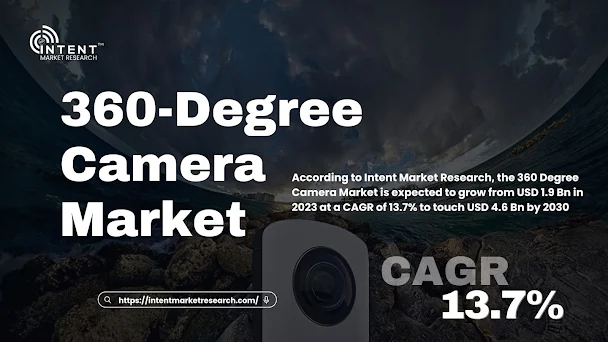The Abdominal Surgical Robots Market is a rapidly evolving industry, presenting cutting-edge advancements in medical technology aimed at enhancing the precision, effectiveness, and efficiency of abdominal surgical procedures. According to Intent Market Research, the Abdominal Surgical Robots Market is expected to grow from USD 3.6 billion in 2023 at a CAGR of 28.2% to touch USD 20.2 billion by 2030. This report delves into the current market size, key players, trends, and factors influencing growth, while identifying emerging opportunities, potential threats, and future projections.
This growth can be attributed to a combination of factors, such as a rising elderly population, the prevalence of abdominal conditions, and the growing preference for minimally invasive solutions. Key regions contributing to the market include North America, Europe, and Asia-Pacific, with North America accounting for the largest share due to higher adoption rates of robotic surgeries, favorable healthcare policies, and an advanced healthcare infrastructure.
Access Full Report @ https://intentmarketresearch.com/latest-reports/abdominal-surgical-robots-market-4136.html
Key Players in the Industry
The Abdominal Surgical Robots Market is marked by intense competition and innovation. Leading companies operating in this sector include:
- Intuitive Surgical, Inc. – A pioneer in robotic-assisted surgical devices, best known for its da Vinci Surgical System.
- Medtronic – A global leader in medical technology with substantial investments in robotic-assisted surgery.
- Stryker Corporation – A key player in medical devices with its Mako robotic-arm system.
- Johnson & Johnson (Ethicon) – Through its Auris Health division, Johnson & Johnson is making strides in robotic-assisted surgery.
- Zimmer Biomet – Known for orthopedic robotics, Zimmer Biomet is expanding its capabilities into abdominal surgical robotics.
These companies continue to innovate by focusing on enhancing robotic functionality, precision, and expanding the application of their systems in abdominal surgery.
Major Trends and Drivers
Several trends and drivers significantly impact the Abdominal Surgical Robots Market:
- Technological Advancements: Advances in artificial intelligence (AI), machine learning, and haptic feedback are revolutionizing surgical robotics. This evolution enables more precise and effective surgical interventions, especially in complex abdominal surgeries.
- Rise in Minimally Invasive Surgery Demand: Patients and healthcare providers increasingly prefer minimally invasive procedures due to reduced recovery times, minimized scarring, and lower infection risks, which drive the adoption of robotic-assisted surgeries.
- Increasing Geriatric Population: As the global elderly population grows, so does the prevalence of abdominal-related health issues, requiring efficient and precise treatment options.
- Growing Healthcare Investments: With more investment in the healthcare sector, hospitals and clinics are increasingly able to adopt sophisticated technologies, thereby driving demand for abdominal surgical robots.
Download Sample Report @ https://intentmarketresearch.com/request-sample/abdominal-surgical-robots-market-4136.html
Opportunities and Threats
The Abdominal Surgical Robots Market presents substantial growth potential. Key opportunities and threats include:
Opportunities
- Expansion into Emerging Markets: Emerging economies such as India and Brazil present substantial growth opportunities due to rising healthcare spending and infrastructure improvements.
- New Applications in Abdominal Surgeries: As technology improves, the scope for robotic assistance in different types of abdominal surgeries, such as hernia repair, colorectal surgery, and bariatric surgery, is expanding.
- Advancements in AI and Data Analytics: Incorporating AI and data analytics offers significant opportunities to improve surgical precision and post-operative outcomes, enhancing overall healthcare quality.
Future Outlook
With an expected CAGR of 28.2%, the Abdominal Surgical Robots Market is set to experience transformative growth. According to Intent Market Research, the Abdominal Surgical Robots Market is expected to grow from USD 3.6 billion in 2023 at a CAGR of 28.2% to touch USD 20.2 billion by 2030. Major factors propelling this growth include technological advancements, rising demand for minimally invasive procedures, and the expanding applications of robotic-assisted surgery in abdominal health.
About Us
Intent Market Research (IMR) is dedicated to delivering distinctive market insights, focusing on the sustainable and inclusive growth of our clients. We provide in-depth market research reports and consulting services, empowering businesses to make informed, data-driven decisions.
Our market intelligence reports are grounded in factual and relevant insights across various industries, including chemicals & materials, healthcare, food & beverage, automotive & transportation, energy & power, packaging, industrial equipment, building & construction, aerospace & defense, and semiconductor & electronics, among others.
We adopt a highly collaborative approach, partnering closely with clients to drive transformative changes that benefit all stakeholders. With a strong commitment to innovation, we aim to help businesses expand, build sustainable advantages, and create meaningful, positive impacts.
Contact Us










